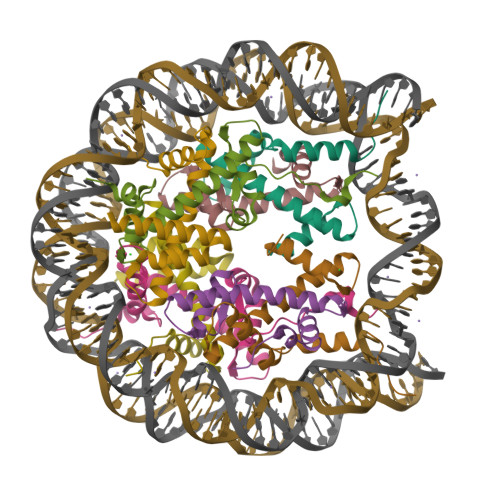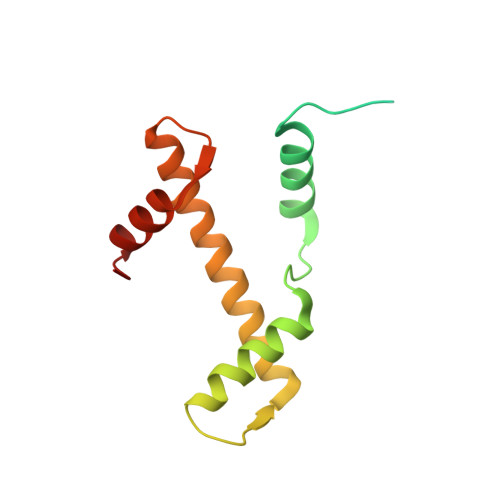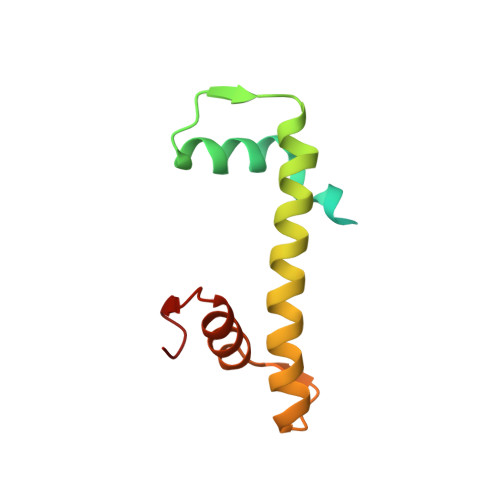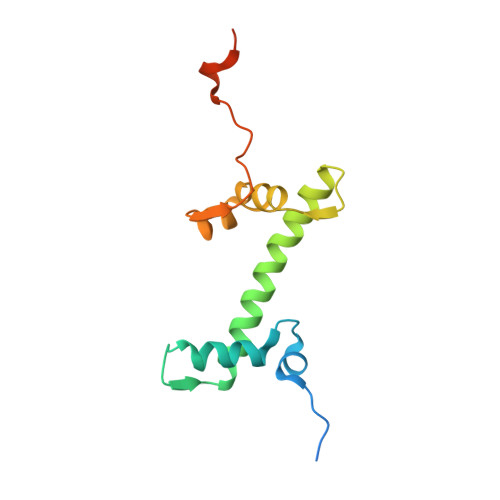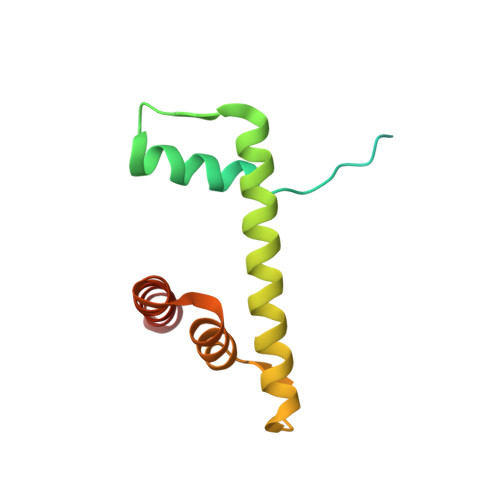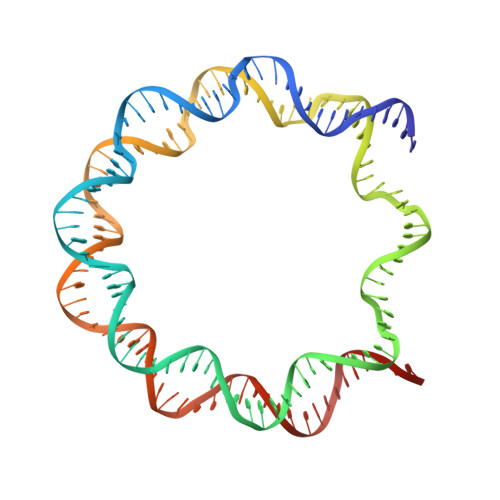Comprehensive Structural Analysis of Mutant Nucleosomes Containing Lysine to Glutamine (KQ) Substitutions in the H3 and H4 Histone-Fold Domains
Iwasaki, W., Tachiwana, H., Kawaguchi, K., Shibata, T., Kagawa, W., Kurumizaka, H.(2011) Biochemistry 50: 7822-7832
- PubMed: 21812398
- DOI: https://doi.org/10.1021/bi201021h
- Primary Citation of Related Structures:
3AYW, 3AZE, 3AZF, 3AZG, 3AZH, 3AZI, 3AZJ, 3AZK, 3AZL, 3AZM, 3AZN - PubMed Abstract:
Post-translational modifications (PTMs) of histones play important roles in regulating the structure and function of chromatin in eukaryotes. Although histone PTMs were considered to mainly occur at the N-terminal tails of histones, recent studies have revealed that PTMs also exist in the histone-fold domains, which are commonly shared among the core histones H2A, H2B, H3, and H4. The lysine residue is a major target for histone PTM, and the lysine to glutamine (KQ) substitution is known to mimic the acetylated states of specific histone lysine residues in vivo. Human histones H3 and H4 contain 11 lysine residues in their histone-fold domains (five for H3 and six for H4), and eight of these lysine residues are known to be targets for acetylation. In the present study, we prepared 11 mutant nucleosomes, in which each of the lysine residues of the H3 and H4 histone-fold domains was replaced by glutamine: H3 K56Q, H3 K64Q, H3 K79Q, H3 K115Q, H3 K122Q, H4 K31Q, H4 K44Q, H4 K59Q, H4 K77Q, H4 K79Q, and H4 K91Q. The crystal structures of these mutant nucleosomes were determined at 2.4-3.5 Å resolutions. Some of these amino acid substitutions altered the local protein-DNA interactions and the interactions between amino acid residues within the nucleosome. Interestingly, the C-terminal region of H2A was significantly disordered in the nucleosome containing H4 K44Q. These results provide an important structural basis for understanding how histone modifications and mutations affect chromatin structure and function.
Organizational Affiliation:
Laboratory of Structural Biology, Graduate School of Advanced Science and Engineering, Waseda University, Shinjuku-ku, Tokyo 162-8480, Japan.









